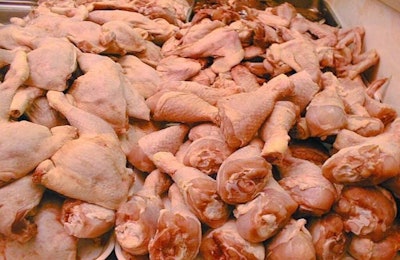
Ghana’s domestic chicken production covers only one quarter of its requirements, according to a new report from the USDA Foreign Agricultural Service (FAS).
FAS estimates the country’s chicken meat output at 35,000 tons, while imports may be up by as much as 14,000 from last year at 158,000 tons as demand continues to rise.
Much of the growth in consumption is driven by the hotel, restaurant and fast-food sectors, which have come to rely on imported products. The main supplier to Ghana is the United States, which has a 40 percent share of total imports, mainly frozen leg quarters and wings. According to FAS, the volume of this trade has been reduced in recent years because of difficulties in obtaining import permits and technical barriers. Brazil and the European Union supply most of the rest of Ghana’s imported chicken requirements.
In 2013 – the most recent year for which figures have been published – the statistics arm of the United Nations’ Food and Agriculture Organization, FAOstat estimated chicken production in Ghana was 47,396 metric tons. The country’s shell egg output was calculated by the same source to be 43,670 metric tons in 2014.
Chicken growers complain of high feed costs
Domestic broiler producers report that their businesses are not profitable due to the high costs of energy and, particularly, feed, according to the FAS. As a result, birds tend to be reared only to meet periods of peak demand, around Christmas, Easter and the end of Ramadan.
Ghanaian poultry producers have turned instead to the more profitable business of egg production. Around 80 percent of commercial feed production is for laying hens. Diets are formulated using local corn, soybean, cottonseed, copra, fish meal and oyster shell, along with imported yellow corn, soybean meal, fishmeal and vitamin-mineral premixes.
According to a recent article on WATTAgNet, Ghana is among the world’s top producers of cassava, which can be used as a feed ingredient as well as for food and the production of starch and ethanol.
Highly pathogenic avian influenza (HPAI) of the H5N1 virus subtype was detected in Ghana in 2015 and 2016, according to the World Organisation for Animal Health (OIE). The most recent outbreaks reported by the national animal health agency to OIE were in Greater Accra in October 2016.

















